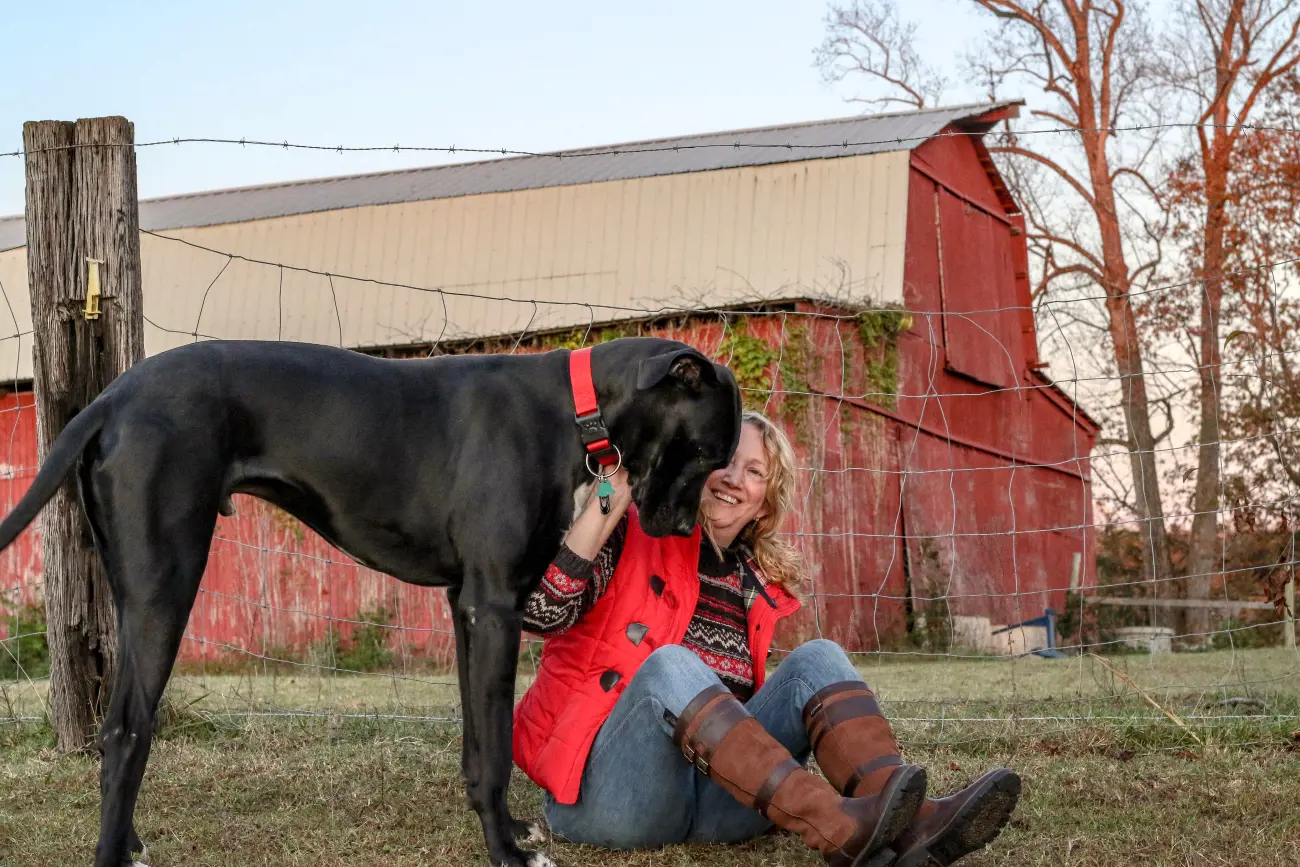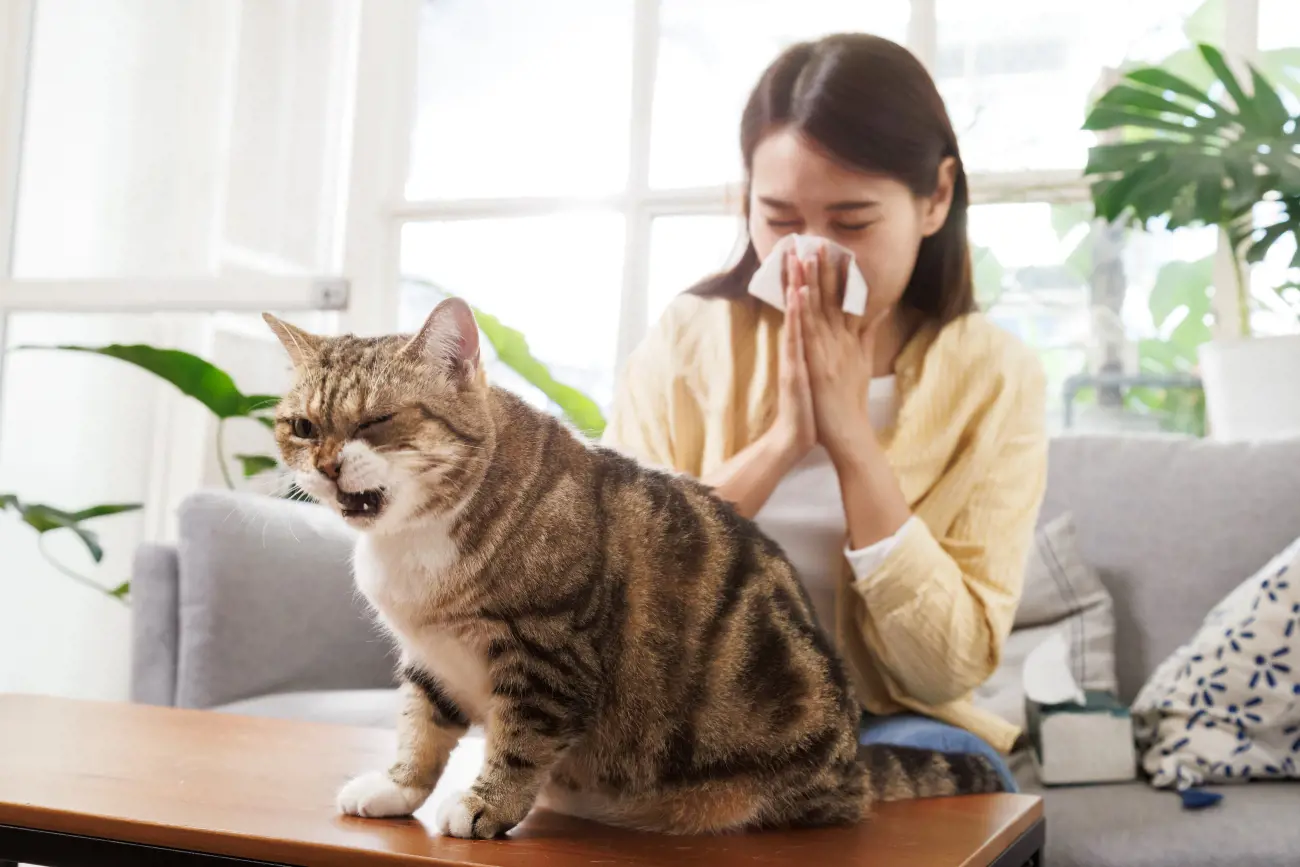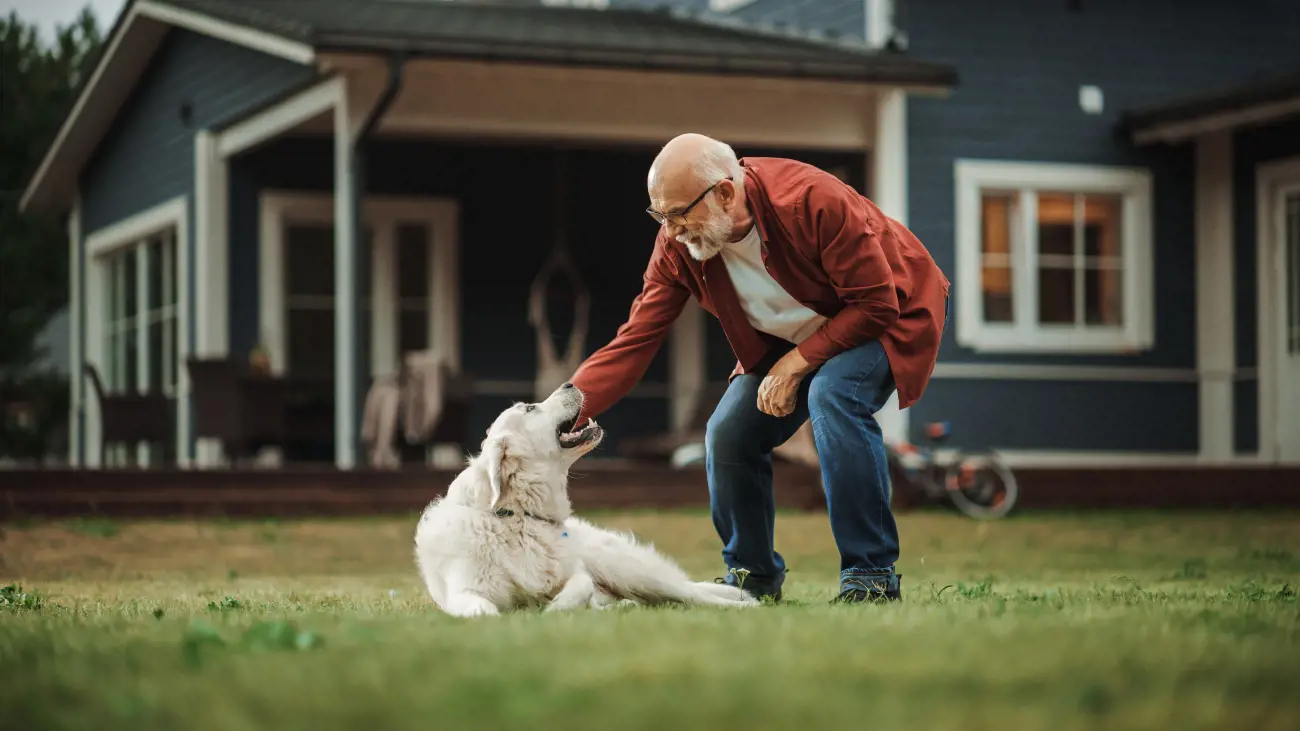What to know about owning a beagle
8th September, 2022

If you and your household are looking for a fun, active dog who’ll get involved in all your adventures, be up for lots of exercise with you, and generally present an eager, playful face to the world, a Beagle should be high on your list.
Affectionate, sociable dogs, Beagles love playing an active role in family life. They were originally bred as scent hounds, but can adapt well to most forms of living – urban or rural – as long as they get their daily quota of exercise. Their small size and go-anywhere adaptability makes Beagles suitable pets for families and first-time owners alike.
That sociable nature, meanwhile, means that they will be happiest in a household where there’s always someone on hand for some company.
Beagles are – like many a pure breed – not immune from certain health conditions. It’s likely that, at some point during your Beagle’s life, you may have to finance some medical treatment, which can be expensive.
That’s why it’s important to make sure your pet insurance starts immediately, so you can start protecting your pup from the moment you bring them home.
The Beagle: a short history
The Beagle was originally developed for hunting hare, a sporting pursuit also known as ‘beagling’ – hence the name. These dogs are beautifully equipped for the hunt, with their excellent sense of smell and keen tracking instincts. Indeed, these particular gifts have made Beagles popular as detection dogs around the world, used chiefly to sniff out illegal imports.
Today’s Beagle was first bred here in Britain in around the 1830s. Several breeds went into its formation, including the extinct Talbot Hound. In fact, though, the term ‘beagle’ has been used to describe small hounds (as opposed to the larger foxhound) since the Middle Ages.
Beagles have an amazing sense of smell – one of the best of any dog, alongside the Bloodhound and Basset Hound. You can find more info about the best sniffer dogs in our article on dog breeds with the best sense of smell.
Common health problems in Beagles – and how you can help
The Beagle’s status as a purebred dog – rather than a crossbreed, such as the Cockapoo or Labradoodle – puts it at a somewhat higher risk of certain health problems. Here are some of the illnesses that can affect Beagles. Make sure that your pet insurance starts immediately after you take ownership of your new pup.
Intervertebral disc disease
In this painful condition, the soft discs that provide cushioning between the vertebrae (back bones) start to degrade. This is a serious problem, as these ‘intervertebral’ discs are key to allowing your dog to run, jump and generally move around without straining their back. With their relatively long back when compared with those short legs, Beagles are somewhat at risk here.
Lots of exercise is part of the solution: this will help to create and maintain healthy tissues and strong muscles. Try not to allow your Beagle to jump onto high places in the home, as big jumps can strain the intervertebral discs. Back problems like this can emerge at any time during a dog’s life.
For this reason, and for the complex and often expensive treatment and surgery that can be required, make sure your pet insurance starts immediately after you become a proud Beagle owner.
Meningitis
In this condition, the membranes surrounding the brain and spinal cord become inflamed. The results include fever and neck pain, and the condition can be fatal if left untreated. Meningitis is in fact rare in dogs, but Beagles are one of the few breeds who seem somewhat susceptible.
Epilepsy
This brain disorder can lead to seizures in dogs between six months and six years old. Often inherited, it cannot be cured – but, typically, it can be managed with the help of medication.
If your dog does experience a seizure, it needn’t necessarily be a cause for worry. It’s not uncommon for dogs to suffer a couple of unexplained seizures during their lifetime, but to be in otherwise perfect health.
Hypothyroidism
This is a condition in which the thyroid gland doesn’t produce enough of the hormones that break food down into energy. As a result, the metabolism slows down: sufferers feel tired and listless, and are apt to gain weight.
Fur loss is another common symptom. With the correct treatment – daily medication that replaces those missing hormones – your Beagle can continue to enjoy a vigorous, healthy life. If your pup is showing any signs of hypothyroidism, contact your vet immediately.
Cherry eye
As the PDSA explains, cherry eye is an abnormality of the eye. It occurs when the tear gland inside a dog's third eyelid pops out. The condition gets its name from the cherry-like appearance of the protruding gland.
Is cherry eye serious? Well, it will be uncomfortable for your dog and lead to more serious conditions such as corneal ulcers and conjunctivitis. Typically, surgery will be required in order to sew the tear gland back into a small pocket within the third eyelid. Beagles are one of the breeds most predisposed to cherry eye.
As a final point, it's worth noting that most insurers won’t provide cover for so-called ‘pre-existing conditions’ – namely, health problems that have already been diagnosed in your dog when the insurance policy starts. Typically, the only illnesses that will be covered will be those that are diagnosed after the start of the insurance.
For this reason, we often recommend that dog owners start their insurance cover while their pet is still at puppy stage, before any health conditions have surfaced. Ideally, arrange things so that your pet insurance starts immediately, from the moment your new puppy makes its home with you.
Having a Beagle around the home
The Beagle is a very relaxed and tolerant breed so should get on well with everyone in the household, provided they are given the right socialisation from an early age. Those high spirits can make a Beagle rumbustious, so we’d recommend supervision around children.
This can cut both ways, though – sometimes a child’s high spirits and constant grabbing of their fur might become too much for a Beagle, and the dog could become aggressive as a result. Always keep an eye on pets and children together, and be ready to step in and separate them if one or the other is not enjoying themselves.
We’d just add one small caveat to the general picture of Beagles as great family pets. They may not be the best choice for families with smaller pets (guinea pigs and hamsters for example). This is because Beagles have a strong hunting instinct, so you’ll need to be very careful not to let any smaller pets out of your sight while your dog is around.
Will a Beagle bark?

It must be said, Beagles have a bit of a bark on them. That has always stood them in good stead, after all, as hunting dogs, when their strong vocal chords can alert their masters to the presence of game.
That bark, and their generally vocal temperament, means that a Beagle makes quite a decent watchdog. They will be less effective as guard dogs, however, due to their friendly temperament. Even a stranger may be able to quickly make friends with this most affable of dog breeds!
If you don’t want to hear too much of their bark, though (and your neighbours may have something to say here), try not to leave them alone for long periods – more than a couple of hours at a time. If your lifestyle means that they will have to be on their own for even short sections of the day, make sure you leave them with toys and activities to keep them occupied.
If their excessive barking becomes an ongoing problem, you may want to seek help and advice from an accredited animal behaviourist. You can find a behaviourist near you by visiting the website of the Association of Pet Behaviour Counsellors, where you’ll find a searchable, zoomable map as well as filters for certain behaviour training specialities.
Training and socialising your Beagle
We always recommend starting a programme of training and socialisation very early on in your dog’s life – during puppy phase, in fact. We’ve got more about training and socialisation – when it should start, and what it should consist of – in this helpful how-to on the subject.
Essentially, socialisation should include exposure to lots of other dogs, different people, and various types of experiences. Introducing your dog to a wide range of creatures, people and events like this helps them to develop into calm adult dogs who are not alarmed, or prompted to aggression, by new people or scenarios.
When it comes to Beagles specifically, these are fun-loving dogs who can be mischievous – so a programme of positive, reward-based training should start as soon as possible, in order to iron out any potential bad habits.
Beagles are one of the more intelligent breeds, and can be quite stubborn and wilful – so your training approach should be firm, fair and consistent. Unless you have some prior experience in training dogs, we’d recommend seeking help from an accredited trainer. The website of the Association of Pet Dog Trainers will help you here – as above, you can search by both region and speciality.
Talking of dog agility, this is a skill (and exercise form) that Beagles would definitely enjoy and benefit from. Essentially a timed trial around an obstacle course, agility can be a really enjoyable way to improve your dog's fitness and obedience. We go into this enjoyable doggie sport in more detail in our article on dog agility.
How much exercise does a Beagle need?
Beagles will need plenty of exercise and stimulus – at least an hour a day – and can become bored if they don’t get enough. Their mix of high energy and a naturally curious nature will mean that they will happily tag along with whatever you are doing.
It's best, if you can, to introduce some variety into this daily quota. A combination of walking and running will work well. On top of this dedicated exercise time, your Beagle will also need playtime, training and socialisation (see above), and ideally some time to spend doing whatever they like in a safe, secure garden.
As far as playtime is concerned, scent games will work well, as Beagles have a keen sense of smell and will love sniffing out puzzles or rewards.
Out and about, you’ll want to keep your Beagle on a lead at all times – unless you’ve got some good, secure places where they can run around off-lead. If they are off-lead, don’t let them stray too far – hunting dogs such as these can get very absorbed if they catch an interesting scent, and may not come eagerly to your call.
That hunting DNA also makes Beagles expert climbers and diggers, so you’ll want to make sure that your garden is suitable for them. A high, sturdy wall or fence is recommended here. As for the digging frenzies, to avoid damage to beautiful borders or a landscaped lawn you may want to think about creating a dedicated 'dig-pit'.
This is, essentially, an area of soil in the garden that’s set aside for doggy digging. An unused corner of the flowerbed, a section of a children’s sand pit, even a big plant pot: if your Beagle has their own dedicated digging space, they should be able to scratch that itch without spoiling your garden. Encourage them to dig here – and reward them when they do it correctly.
Grooming and shedding
Like the majority of dog breeds, your Beagle will shed a little. In comparison with some other dog types, however, their shedding is pretty manageable and their coats reasonably low maintenance. We would suggest a weekly brush, just to root out dead hair and to keep your pet’s coat looking smooth and shiny.
Grooming is also a good time to carry out a more general health inspection. For example, Beagles can be somewhat prone to ear infections because of those longish ears – so keep an eye on their ears, both inside and out. Making sure that they stay clean and dry will help to ward off any ear infections.
Infections like this can develop at any time during a dog’s life, and aren’t limited to adulthood or old age. That’s another reason for recommending some decent pet insurance for your Beagle, from puppy stage onwards – and for specifying that the pet insurance starts immediately.
Alternatives to a Beagle
If you’re looking around for something like a Beagle, but not quite a Beagle, you have a few options. We’d suggest looking at:
English Foxhound
Like a large Beagle, Foxhounds are similarly good-natured and tolerant. The hunting instinct is strong with these dogs, so you’ll need to exercise them in secure areas where they won’t cause harm or damage. Also make sure to train a Foxhound to respond to your recall: this is important as this breed can get very absorbed once they’re on the scent of something.
Foxhounds are very energetic dogs, and will need at least two hours’ exercise a day for their physical and mental health. As such, they should be considered only by reasonably active owners.
Labrador Retriever

Affectionate and loving, Labradors will get on well with all members of the family. They’re also obedient, intelligent and keen to please, which means that training is usually fairly easy. They are likely to form bonds with the whole family – in particular with children, for whom their patient nature makes them a great fit. Grooming is simple, too, typically just a weekly brush.
So what’s not to love? Nothing, really, although prospective Lab owners should note that the breed is more than usually prone to certain health conditions, including hip and elbow dysplasia, obesity and progressive retinal atrophy. Given this heightened propensity to illness, we would recommend any Labrador owners to make sure that their pet insurance starts immediately after they bring a Lab into their lives.
Dachshund
These playful, affectionate dogs are very easy to fall in love with – and have plenty of energy wrapped up in such a compact form. Better still, when they’ve worn themselves out running around, they’re often happy to curl up and relax with their human companion.
Clever little dogs, they can know their own mind all too well and can require patient training. They also, like the Labrador Retriever above, have a somewhat complex health profile. Back problems, for example, are not uncommon in Dachshunds: that long back is a lot for those little legs to carry, and complaints such as Intervertebral Disc Disease are common.
Make sure any pet insurance starts immediately as soon as you take ownership.
Get pet insurance that starts immediately from Purely Pets
Owning a pet brings with it so many happy moments, from much-loved walks via rewarding training sessions to long, comfortable afternoons curled up together on the sofa.
It's quite possible that there will be one or two health concerns along the way, too, and you may find yourself faced with some unexpected medical bills. Some good pet insurance will be a great help here, assisting you with some of these larger, unforeseen payments.
As we’ve seen, it’s a smart move to make sure that your pet insurance starts immediately so you don’t find yourself ineligible for cover because of a pre-existing condition.
As well as starting immediately, our pet insurance features a range of additional benefits, including:
- 24 Hour Vet Helpline
- Excess from just £60
- 15 levels of lifetime cover
Why not contact us for a quote and make sure that your pet insurance starts immediately?
Helpful Pages
Recent Posts

Why do Great Danes bury their heads?
12/03/25
Find out more about Beagles
28/02/25Pet Insurance Quote
- 98% claims paid *
- Claims paid directly to vets
- 24/7 vet video consultations
- Interest free monthly payments


